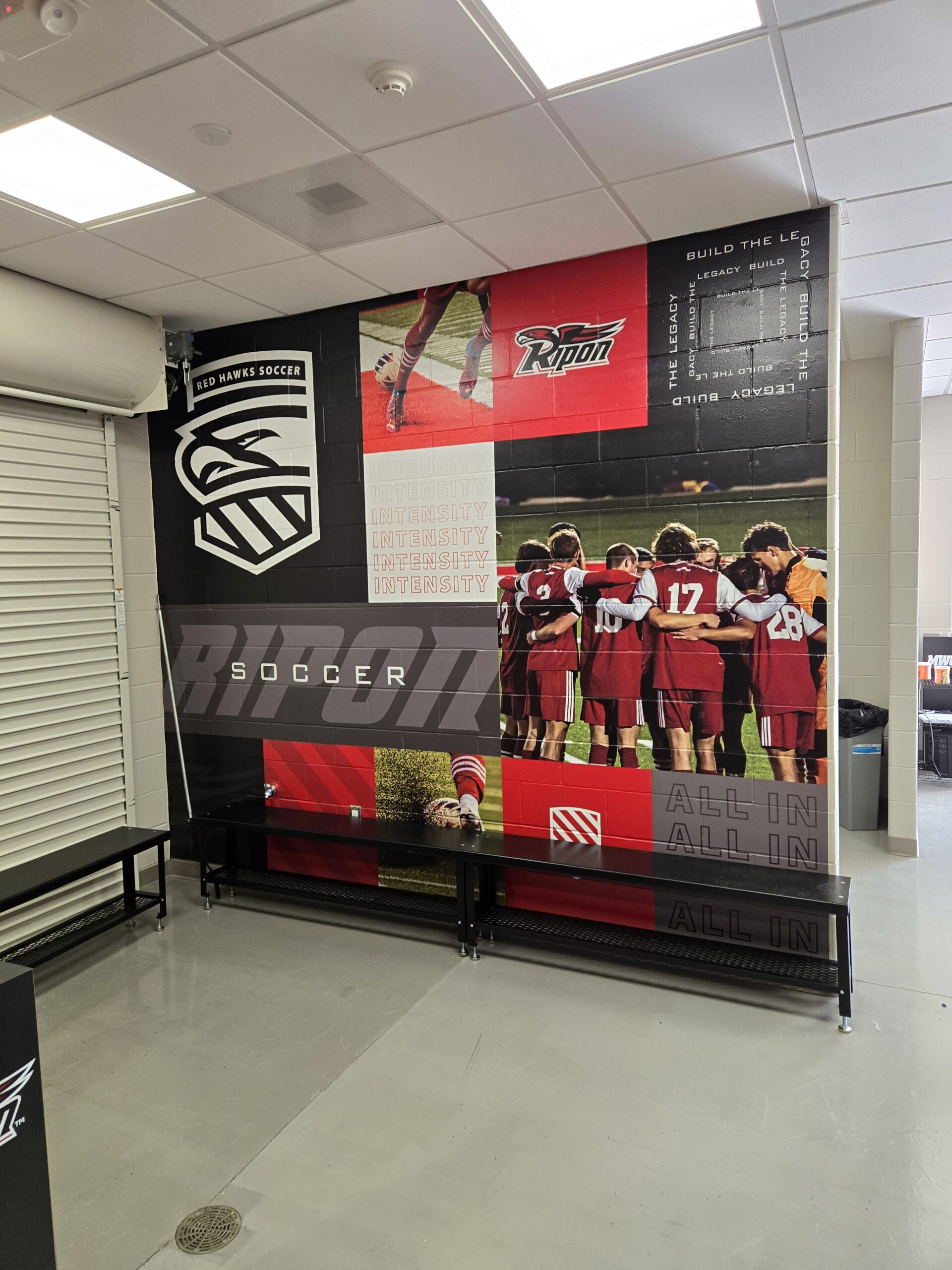Transforming School Spaces Through Environmental Branding
Images used in this post are from our branding project for Ripon College.
Environmental branding in schools is more than just decorating a space—it’s about shaping an environment that reflects the school’s identity, values, and culture while enhancing the overall learning experience. The physical space students occupy every day plays a significant role in their motivation, engagement, and sense of belonging. By thoughtfully integrating design elements like colors, logos, artwork, and messaging, schools can create an immersive atmosphere that inspires both students and staff. This form of branding strengthens the school’s community, reinforces its mission, and leaves a lasting impression on everyone who walks through its doors.

What is Environmental Branding for Schools?
Environmental branding is the practice of using design elements—such as colors, logos, graphics, and materials—to communicate a school’s identity, values, and mission within the physical space. Unlike traditional advertising or marketing, environmental branding transforms a school’s interior and exterior spaces into immersive, visually cohesive experiences that reinforce the school’s culture and ethos.
Environmental branding goes beyond simple decor or signage. It incorporates elements that create a sense of place and belonging for students, faculty, and visitors. This kind of branding fosters school pride, supports educational goals, and helps build an environment that students and staff feel connected to.



Key Elements of Environmental Branding for Schools
- Color Palette Colors have the power to evoke emotion. Bright, vibrant colors may create an energetic and lively atmosphere, while softer hues can make spaces feel calm and focused. Choosing the right color palette that aligns with the school’s values and personality can set the right tone throughout the building.
- School Logo and Mascots Logos and mascots are essential elements of school branding. They should be prominently displayed in common areas, classrooms, and outdoor spaces. A strong logo or mascot not only helps with recognition but also instills school spirit and pride.
- Inspirational Quotes and Messages Walls covered in inspiring quotes can be a powerful tool for motivation. Whether from famous thinkers or student-written works, these messages remind students of the bigger picture and encourage perseverance, growth, and self-confidence.
- Student Artwork and Achievements Displaying student artwork, projects, and academic achievements helps to personalize the space and create a sense of ownership. Students are more likely to feel engaged and motivated when they see their work displayed proudly throughout the school.
- Interactive Elements Incorporating interactive design elements can turn a simple hallway or classroom into a place of learning and engagement. Think chalkboard walls for brainstorming, digital displays that showcase current events or student work, or tactile, hands-on learning stations in common areas.
- Wayfinding Signage Wayfinding—signage that helps visitors navigate the building—is not only functional but can also be an opportunity to reinforce the school’s branding. Using color, typography, and imagery that align with the school’s identity can make the building easier to navigate while reinforcing the brand’s story.
- Outdoor Spaces Don’t forget about the outdoors! Courtyards, playgrounds, and sports fields are all key parts of the school environment. Whether it’s through branded signage, murals, or landscaping that reflects the school’s values, outdoor spaces can be just as impactful in communicating the school’s message.


Best Practices for Implementing Environmental Branding in Schools
- Involve the School Community: Get input from students, staff, and parents on what they want to see in the school’s design. Involving the community in the process can ensure that the branding reflects the diverse perspectives and values of the entire school population.
- Be Authentic: Ensure that the branding authentically represents the school’s identity and mission. It should feel true to the school’s values and vision, not just be about creating a “cool” aesthetic.
- Keep it Flexible: As schools grow and evolve, so should the branding. The design should be adaptable to accommodate changes in school culture, new academic programs, or evolving student needs.
- Focus on Engagement: The goal of environmental branding is not just to create an attractive space but to foster an environment that engages students and staff on a deeper level. Consider how design elements can be interactive, educational, or motivational.

Conclusion
Environmental branding for schools is more than just making a space look appealing—it’s about creating an atmosphere that reflects the school’s values, supports its mission, and enhances the learning experience. When done thoughtfully, environmental branding can transform a school into a place where students feel inspired, valued, and connected. It builds a strong sense of identity, strengthens school culture, and helps everyone—students, staff, and visitors—feel like they’re part of something bigger. So, why not start reimagining your school’s space today and create an environment that truly reflects the heart of your institution?






